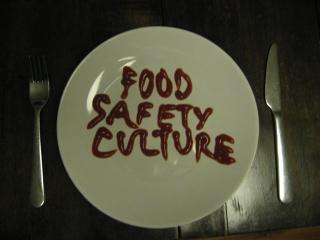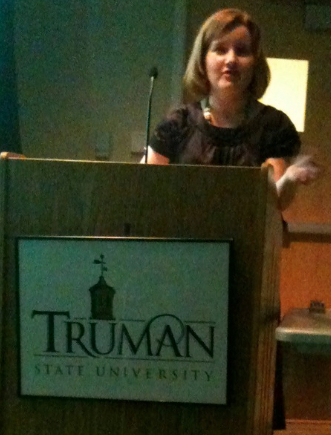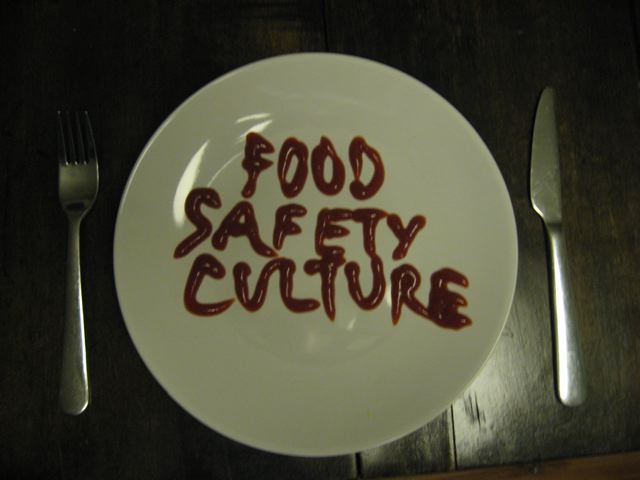Jim Prevor, sometimes known as the Perishable Pundit, has offered a plan to improve food safety. Writing in The New Atlantis, Prevor says sure, government  has an important role in food safety, but the current focus on legislation is misguided. Or at least that’s my summary. Here’s some more summarized stuff from Prevor’s article. The first two suggestions caught my attention – the rest is boilerplate stuff. (The complete article has also been translated into French by Albert Amgar and is available here.)
has an important role in food safety, but the current focus on legislation is misguided. Or at least that’s my summary. Here’s some more summarized stuff from Prevor’s article. The first two suggestions caught my attention – the rest is boilerplate stuff. (The complete article has also been translated into French by Albert Amgar and is available here.)
1. Switch to a negligence standard from a strict liability standard, and switch primary liability to the trade buyer
Because of strict liability, the primary food safety concern among retailers in the U.S. is that their vendors carry sufficient liability insurance. By contrast, in the United Kingdom and certain other foreign countries, supermarkets can be held liable in court if a person becomes ill or dies and it is shown that the retailer did not exercise proper due diligence in vetting suppliers.
Second, because the standard is strict liability, farmers and processors get no return on their investment in food safety if they have the bad luck to have an outbreak. In other words, the liability is strictly theirs whether they invested millions, going above and beyond all food safety standards, or they did nothing at all.
Combining this strict liability standard with a concentrated buying environment, where large chains such as Wal-Mart, Costco, Kroger, Safeway, and Supervalu account for the vast majority of purchases, results in a potentially troublesome situation. At these big buyers, although official corporate policy may place a priority on food safety and the individuals employed may care about food safety, the day-to-day institutional imperative is to get lower prices from vendors. Most producers are more than willing to give buyers exactly as much food safety as they are willing to pay for. But buyers, who are not liable for food safety problems, have precious little incentive to pay extra for higher food safety standards. …
In other words, food safety is primarily a tradable good in the marketplace. In deciding that the producer is liable no matter how diligent his efforts and that the retailer is not liable no matter how lax his efforts, the judicial system has distorted the way the market meets the consumer interest in food safety. Solving this problem is far more likely to enhance food safety than giving the FDA additional power. After all, the FDA doesn’t produce or buy food; it is always going to be a much more indirect player in moving the needle on food safety than members of the industry.
2. Root out bribery and corruption in food safety certification
The best federal agency to enhance food safety is not the FDA but the FBI. Few buying operations have the capability to have their own personnel inspecting and monitoring producers along today’s global supply chains. The solution is to rely on  third-party certification agencies. Trade buyers can establish their own standards or agree to accept other well-recognized standards, such as those of the British Retail Consortium. Adherence to these standards is then confirmed by various independent auditing groups. This is essentially the same mechanism the USDA uses to implement organic certification. The problem is that there is widespread corruption associated with these certifications, especially in areas such as China, Eastern Europe, and many developing countries, though auditors that are less than rigorous are also well known in the United States.
third-party certification agencies. Trade buyers can establish their own standards or agree to accept other well-recognized standards, such as those of the British Retail Consortium. Adherence to these standards is then confirmed by various independent auditing groups. This is essentially the same mechanism the USDA uses to implement organic certification. The problem is that there is widespread corruption associated with these certifications, especially in areas such as China, Eastern Europe, and many developing countries, though auditors that are less than rigorous are also well known in the United States.
The corrupt sale of certifications poses a fundamental threat to food safety, and switching to government inspectors doesn’t solve the problem. First, the U.S. government has no authority to run inspections in China. Second, if the government were to use locals in other countries to run inspections, it would face the same problems as a private auditor — keeping the loyalty of local employees whose family, clan, and national interests all compel them to approve facilities and products. Third, whether through sloth or corruption, there are all too many examples of government inspectors not doing their jobs right here in the United States — from rats running wild in a KFC that had been inspected just the night before to horrid conditions at the 7th Street Market in Los Angeles to a payola scandal at the Hunts Point Produce Market in New York.
Beyond establishing a proper liability regime, increasing the reliability of food safety certifications by rooting out bribery and corruption is perhaps the single most valuable contribution the federal government could make toward food safety.


 Pied-Noirs, the former French inhabitants of Algeria, at her undergraduate alma mater, Truman University in Kirksville, Missouri, where she was feted Monday night.)
Pied-Noirs, the former French inhabitants of Algeria, at her undergraduate alma mater, Truman University in Kirksville, Missouri, where she was feted Monday night.) • Although no two great food safety cultures will be identical, they are likely to
• Although no two great food safety cultures will be identical, they are likely to I’m also not a fan of whining.
I’m also not a fan of whining.